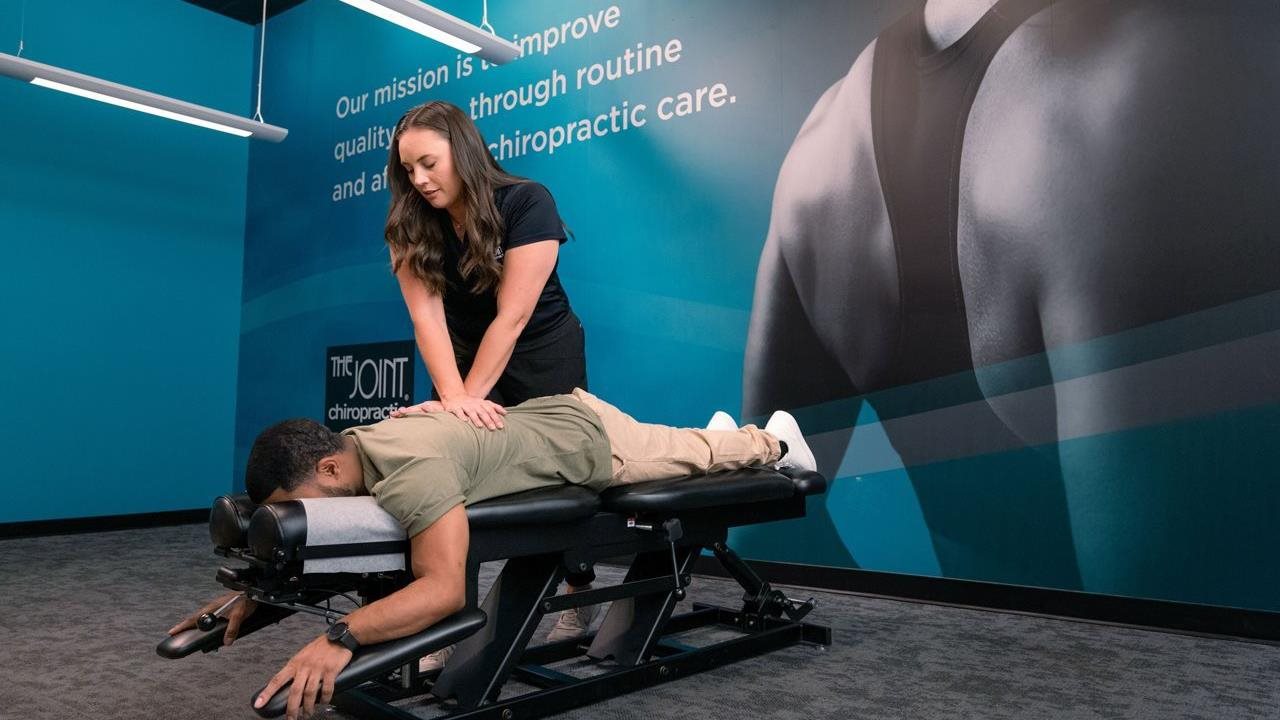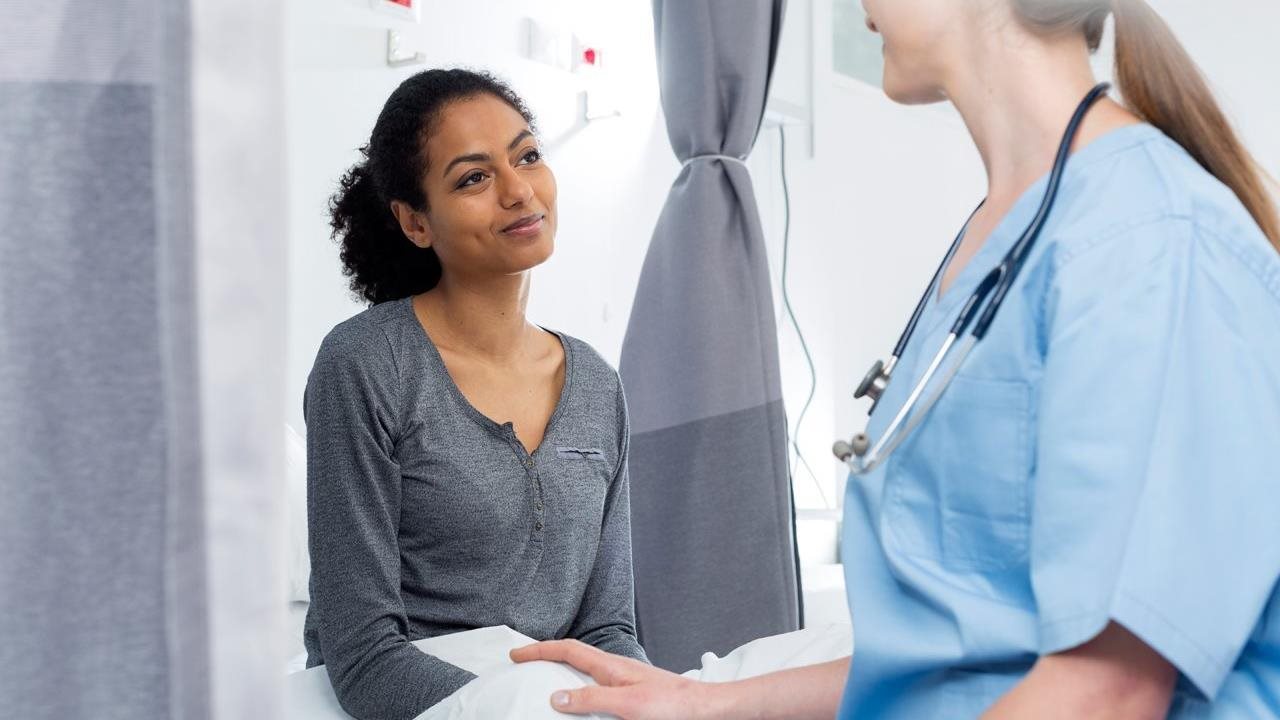2024-05-23T11:01:00
(BPT) – In 2018, a vibrant young woman with a passion for theater and education set off on the quest of a lifetime: spending a month walking 500 miles on the Camino de Santiago pilgrimage from France to Spain. Christina K. was also at the beginning of a quest to learn more about a mysterious lump on her collarbone.
Months before her trip, one of Christina’s colleagues insisted she get the lump on her collarbone looked at. While it was bothering her and even made some activities difficult, Christina was hesitant to have it checked because she didn’t want to disrupt her long-planned European trip.
She relented, though, and an initial X-ray and ultrasound led her doctor to conclude it was a lipoma, a common, usually benign, fatty tumor that grows under the skin. With that diagnosis, Christina went on her trip, walking the 500-mile pilgrimage without giving the lipoma more thought.
When she returned, she prepared for surgery to remove the lipoma, taking time off from her rewarding job as a school drama teacher. But instead of hearing that the lump was indeed a lipoma that had been successfully removed, Christina was told by her doctor that he wasn’t sure what type of tumor it was.
Sensing that something was seriously wrong, Christina decided to seek answers from various specialists. She finally received a diagnosis at a university-based medical center. But the answer turned out to be something she’d never heard of: a desmoid tumor. At the time, her surgeon spoke to her about the possibility of removing the tumor. However, he said that it would be a very invasive surgery. In addition to the tumor, he would need to remove her collarbone, surrounding muscle tissue, and part of her sternum. She was informed that the surgery could potentially affect her vocal cords, which were her lifeblood as a singer, actress and educator.
“I went into the specialist’s office as someone who called herself healthy, who went yearly for my checkup, who was proactive in all the ways that I should have been — green smoothies in the morning, lots of exercise through yoga and dance. I was shocked and crushed when I got the diagnosis of a desmoid tumor.”
What is a desmoid tumor?
Desmoid tumors are rare, locally aggressive soft tissue tumors that can form anywhere in the body where there is connective tissue.[1],[2],[3] Also called aggressive fibromatosis or desmoid fibromatosis, these tumors can cause significant pain, loss of physical function and mobility, disfigurement and a diminished quality of life.[1],[2],[4],[5],[6],[7],[8]
Managing desmoid tumors can prove to be challenging.[2],[5],[6] Unpredictable by nature and with a high likelihood of recurrence, desmoid tumors have a significant impact on people’s lives.[6],[9],[10] Their invasive growth patterns exert pressure on nearby connective tissue and, in some instances, vital organs, potentially leading to life-threatening complications.[2],[5],[11]
Alternatives to surgery
Before making a decision about surgery, Christina met with her new oncologist and learned that surgery to remove desmoid tumors can be extremely complicated and often not successful.
“Desmoid tumors have these tendrils, like an octopus,” Christina said. “You need to make sure you get every trace of them, because otherwise they can recur.”
In fact, up to 77% of people with a desmoid tumor can experience recurrence following surgical removal.[12],[13]
With no U.S. Food and Drug Administration (FDA)-approved treatment for desmoid tumors available at the time, Christina’s oncologist recommended several off-label treatments, including chemotherapy to try to shrink the tumor, which had grown to the size of a grapefruit.
The next few years were difficult for Christina, as she experienced severe reactions to the treatments that ranged from swelling and aching joints to nausea and her hair turning white. Unfortunately, none of the medicines slowed the tumor’s growth, much less shrank it. During that time, the COVID-19 pandemic began, forcing Christina into isolation to protect her now immuno-compromised system and making it impossible to continue working as an educator.
A new treatment option
Just as it seemed there might not be any medical treatments left to try, Christina’s doctor told her she could try an investigational treatment that was being studied specifically for desmoid tumors. In 2020, she began taking nirogacestat, now marketed by SpringWorks Therapeutics, Inc. under the brand name OGSIVEO®, and has been on that treatment ever since.
OGSIVEO (nirogacestat) is the first and only FDA-approved treatment for adults with progressing desmoid tumors who require systemic therapy.[14],[15] See Important Safety Information below.
Christina recently marked the six-year anniversary of her desmoid tumor diagnosis. She remembers hoping her tumor would stop growing and stabilize, exactly like her current situation.
Christina is still taking OGSIVEO and says that she has experienced a reduction in pain.
She has become a rare disease advocate through her Girl Meets Cancer Instagram and works as a program coordinator for the Cactus Cancer Society, which helps young adults facing cancer find support, connection and creative outlets.
Just as she confronted the challenge of a 500-mile walk from France to Spain, Christina views all these hurdles as part of her life adventure with a positive attitude that gets her through even the toughest days.
“I don’t like the word ‘journey,'” Christina said. “It’s not. I try to say the word adventure. I’m ready to take this all on as a new adventure.”
Learn more about the FDA-approved treatment option at OGSIVEO.com.
Important Safety Information
What is OGSIVEO?
OGSIVEO is a prescription medication used to treat adults with progressing desmoid tumors who require a medicine by mouth or injection (systemic therapy). It is not known if OGSIVEO is safe and effective in children.
Before taking OGSIVEO tell your healthcare provider about all of your medical conditions, including if you:
- Have liver problems.
- Are pregnant or plan to become pregnant. OGSIVEO can harm your unborn baby. Tell your healthcare provider if you become pregnant or think you may be pregnant during treatment.
- Females who are able to become pregnant:
- Your healthcare provider will give you a pregnancy test before you start treatment with OGSIVEO.
- You should use effective birth control during treatment and for 1 week after the last dose. Talk to your healthcare provider about methods that may be right for you.
- Stop taking OGSIVEO and tell your healthcare provider right away if you become pregnant.
- Males with female partners who are able to become pregnant should use effective birth control during treatment with OGSIVEO and for 1 week after the last dose.
- Are breastfeeding or plan to breastfeed. It is not known if OGSIVEO passes into your breast milk. Do not breastfeed during treatment with OGSIVEO and for 1 week after the last dose.
Tell your healthcare provider about all the medicines you take, including prescription and over-the-counter medicines, vitamins, and herbal supplements.
You should avoid taking proton pump inhibitors (PPIs) and H2 blockers during treatment with OGSIVEO. Ask your healthcare provider if you are not sure if you take one of these medicines.
How should I take OGSIVEO?
- Take OGSIVEO exactly as your healthcare provider tells you to take it.
- Your healthcare provider may change your dose, temporarily stop, or permanently stop treatment with OGSIVEO if you develop side effects.
- Take OGSIVEO 2 times a day with or without food.
- Swallow OGSIVEO tablets whole. Do not break, crush, or chew.
- If you take an antacid medicine, take OGSIVEO 2 hours before or 2 hours after the antacid.
- If you vomit after taking a dose or miss a dose of OGSIVEO, take your next dose at your regular time. Do not take 2 doses of OGSIVEO to make up the dose.
What should I avoid while taking OGSIVEO?
Avoid eating or drinking grapefruit products, Seville oranges, and starfruit during treatment with OGSIVEO.
What are the possible side effects of OGSIVEO?
OGSIVEO can cause serious side effects, including:
- Diarrhea. Diarrhea is common with OGSIVEO and may sometimes be severe. Your healthcare provider may tell you to drink more fluids or to take antidiarrheal medicines. Tell your healthcare provider right away if you have diarrhea that lasts longer than a few days and does not get better after taking antidiarrheal medicines.
- Ovarian problems. Females who are able to become pregnant may have ovarian problems and changes in their menstrual cycle during treatment. OGSIVEO may affect fertility which may affect your ability to have a child. Tell your healthcare provider if you have any changes in your menstrual cycle or hot flashes, night sweats, or vaginal dryness during treatment.
- Liver problems. OGSIVEO can increase liver enzymes. Your healthcare provider will do blood tests to check your liver function before you start and during treatment with OGSIVEO.
- New non-melanoma skin cancers. Your healthcare provider will do skin exams before and during treatment with OGSIVEO if you are at risk for skin cancer. Tell your healthcare provider if you have any new or changing skin lesions.
- Electrolyte (salt) problems. Your healthcare provider will do blood tests to check your phosphate and potassium levels during treatment and may give you medicines to treat low phosphate or low potassium if needed. Tell your healthcare provider if you develop any muscle pain or weakness.
Tell your healthcare provider right away if you have any side effect that bothers you or that does not go away. Your healthcare provider may change your dose, temporarily stop, or permanently stop treatment with OGSIVEO.
The most common side effects of OGSIVEO are:
- rash
- nausea
- tiredness
- mouth sores
- headache
- stomach (abdominal) pain
- cough
- hair loss
- upper respiratory infection
- shortness of breath
OGSIVEO can affect fertility in females and males, which may affect your ability to have a child. Talk to your healthcare provider if this is a concern for you.
These are not all of the possible side effects of OGSIVEO. Call your doctor for medical advice about side effects. You may report side effects to the FDA at 1-800-FDA-1088.
Please click here for full Prescribing Information including Patient Information.
[1] Sbaraglia M, Bellan E, Dei Tos AP. The 2020 WHO Classification of Soft Tissue Tumours: news and perspectives. Pathologica. 2021;113(2):70-84. doi:10.32074/1591-951X-213.
[2] Penel N, Chibon F, Salas S. Adult desmoid tumors: biology, management and ongoing trials. Curr Opin Oncol. 2017;29(4):268-274. doi:10.1097/CCO.0000000000000374.
[3] NIH. National Cancer Institute Center for Cancer Research. Desmoid tumor. Accessed October 16, 2023. https://www.cancer.gov/pediatric-adult-rare-tumor/rare-tumors/rare-soft-tissue-tumors/desmoid-tumor.
[4] Cancer.Net. Desmoid tumor: introduction. Accessed October 16, 2023. https://www.cancer.net/cancer-types/desmoid-tumor/introduction.
[5] Constantinidou A, Scurr M, Judson I, Litchman C. Clinical presentation of desmoid tumors. In: Litchman C, ed. Desmoid Tumors. Springer; 2012: Accessed August 2023. https://www.researchgate.net/publication/226455135. doi:10.1007/978-94-007-1685-8_2.
[6] Bektas, M, et al. Desmoid Tumors: A Comprehensive Review. Adv Therapeutics. 2023. doi.org/10.1007/s12325-023-02592-0.
[7] Husson O, Younger E, Dunlop A, et al. Desmoid fibromatosis through the patients’ eyes: time to change the focus and organisation of care? Support Care Cancer. 2019;27(3):965-980. doi:10.1007/s00520-018-4386-8.
[8] Gounder MM, Maddux L, Paty J, Atkinson TM. Prospective development of a patient-reported outcomes instrument for desmoid tumors or aggressive fibromatosis. Cancer. 2020;126(3):531-539. doi:10.1002/cncr.32555.
[9] Skubitz KM. Biology and treatment of aggressive fibromatosis or desmoid tumor. Mayo Clin Proc. 2017;92(6):947-964. doi:10.1016/j.mayocp.2017.02.012.
[10] Easter DW, Halasz NA. Recent trends in the management of desmoid tumors. Summary of 19 cases and review of the literature. Ann Surg. 1989;210(6):765-769. doi:10.1097/00000658-198912000-00012.
[11] Joglekar SB, Rose PS, Sim F, Okuno S, Petersen I. Current perspectives on desmoid tumors: the Mayo Clinic approach. Cancers (Basel). 2011;3(3):3143-3155. doi:10.3390/cancers3033143.
[12] Skubitz KM. Biology and treatment of aggressive fibromatosis or desmoid tumor. Mayo Clin Proc. 2017;92(6):947-964. doi:10.1016/j.mayocp.2017.02.012.
[13] Easter DW, Halasz NA. Recent trends in the management of desmoid tumors. Summary of 19 cases and review of the literature. Ann Surg. 1989;210(6):765-769. doi:10.1097/00000658-198912000-00012.
[14] OGSIVEO. Prescribing Information. SpringWorks Therapeutics, Inc.
[15] Riedel RF, Agulnik M. Evolving strategies for management of desmoid tumor. Cancer. 2022;128(16):3027-3040. doi:10.1002/cncr.34332.
© 2024 SpringWorks Therapeutics, Inc. All rights reserved. OGSIVEO is a registered trademark of SpringWorks Therapeutics, Inc. C_OGS_US_0309 05/24.













